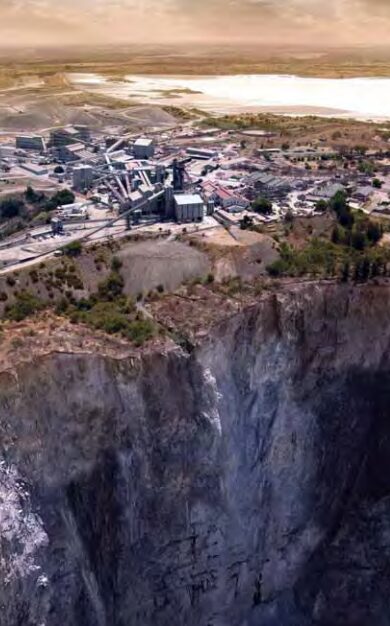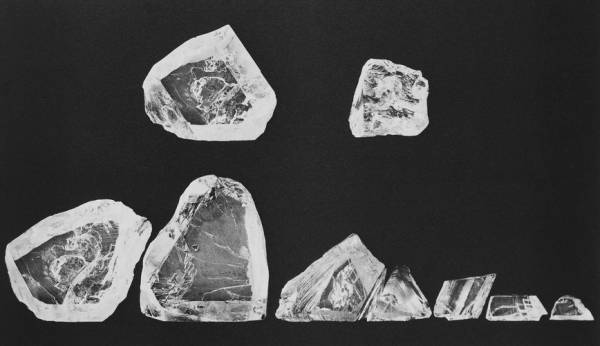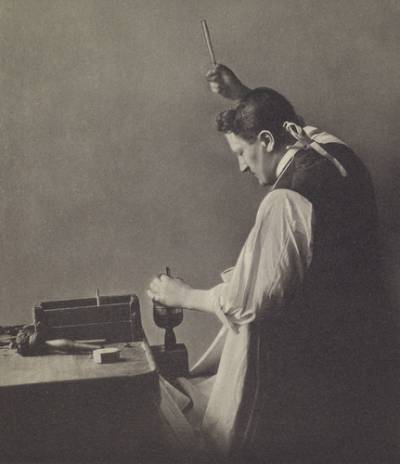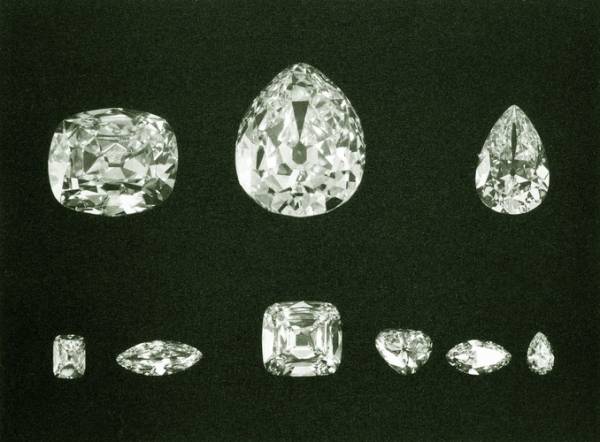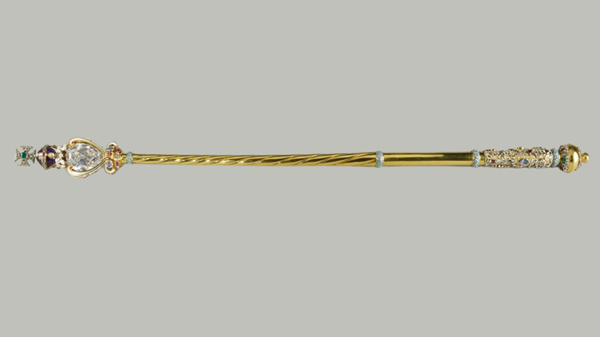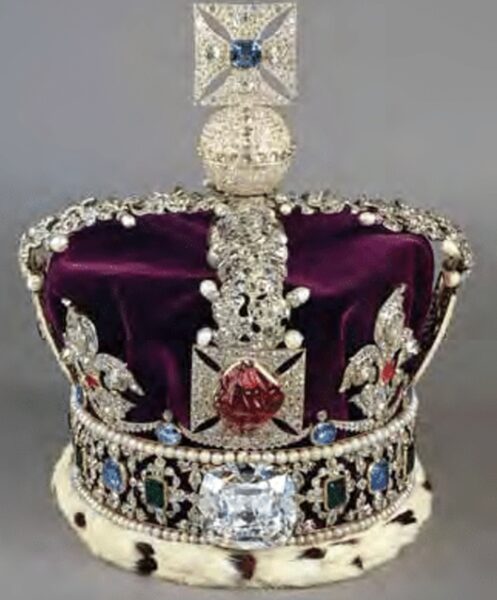Discover the story behind the Cullinan Diamond, a symbol of luxury and history unmatched in size. This gemstone has captivated the world with its sheer size and breathtaking brilliance.
Discovering the Cullinan Diamond: A Gem Beyond Compare:
The Cullinan Diamond is a beacon of unparalleled grandeur, unearthed in 1905 at the premier mine in South Africa. Its immense size and pristine clarity have set it apart as a marvel in the gemstone community. (Much later, gemologists analyzed and confirmed it as the coveted type IIA diamond) The Cullinan diamond boasts a rich history and plays a significant role in royal collections. It continues to enchant and inspire awe across generations.
The discovery of the largest gem-quality diamond ever uncovered:
Uncovering the Giant: The Initial Discovery.
Frederick Wells, conducting a routine inspection in the sunlit mines of South Africa, unearthed the Cullinan Diamond in 1905 at the Premier Mine. Due to its unprecedented size and clarity, the miners initially mistook it for a large piece of glass, but they soon recognized it as a gem of monumental significance. It weighed an astonishing 3,106 carats, making it the largest gem-quality rough diamond ever found.
Renamed as the Cullinan diamond mine in 2003, formerly known as the Premier mine, this location has produced more large diamonds than any other mine in history. The famous Cullinan diamond was discovered on the opposite side of the rim depicted here. Image Source: Diamond Trading Co.
A Marvel of the Mining World.
The Cullinan Diamond’s discovery was a testament to nature’s wonders and the fortuitous human element of gem mining. This diamond highlighted the region’s rich mineral wealth, located near Pretoria in what was then the British colony of the Transvaal. Its dimensions were staggering, measuring 10.1 x 6.35 x 5.9 cm, and its exceptional blue-white color and clarity set it apart as a once-in-a-lifetime find.
From Earth to Royal Splendor.
Once verified and recognized for its unparalleled value, the diamond became the subject of intense interest and speculation. They displayed it in Johannesburg, drawing thousands of people eager to glimpse this extraordinary find. The Transvaal Government eventually purchased the Cullinan and gifted it to King Edward VII of England, symbolizing the loyalty of the Transvaal people to the British crown. This act marked a significant moment in colonial relations and cemented the diamond’s legacy as a jewel of historic and national importance.
Cutting and Crafting a Legend.
The challenge of cutting such a massive diamond was unprecedented. The mine owners entrusted the task to Joseph Asscher and Co. in Amsterdam, renowned for their expertise in diamond cutting. The first attempt to split the diamond using traditional methods resulted in a broken knife—a testament to the diamond’s hardness and density. However, subsequent efforts were successful, and artisans skillfully transformed the original stone into nine major stones and 96 smaller brilliants. They incorporated the two most significant segments, Cullinan I and II, into the British Crown Jewels, while other segments have adorned various royal artifacts and regalia.
Cullinan Diamond Cleaved Into Nine Pieces
These are the initial nine pieces cleaved out of the Cullinan Diamond. But they have not been cut or polished yet. Three masterly polishers working 14 hours a day would take almost eight months to finish the nine stones.
This historic gem continues to be a subject of fascination, not only for its sheer size and beauty but also for its journey from a dusty mine in South Africa to the crowns of British monarchs. The Cullinan Diamond symbolizes the enduring allure and mystery that precious gemstones hold over our imaginations.
Thomas Cullinan and the Premier Mine’s historical find in 1905:
Unveiling the Discovery.
In the vast expanse of South Africa’s Gauteng Province lies the Premier Mine, renowned for its rich deposit of gem-quality diamonds. In this fertile ground, the discovery of the Cullinan Diamond in 1905 marked a monumental moment in the history of gemology. Thomas Cullinan, the mine’s owner, had established the mine hoping to uncover substantial diamond deposits, but the find exceeded all expectations. The diamond, the largest gem-quality ever discovered, boasted extraordinary clarity and a mesmerizing blue-white hue.
The Day of Discovery.
On a typical sunny day, Frederick Wells, the mine superintendent, routinely inspected the mine’s surface. An unusual reflective glint caught his attention from the sidewall of the mine, about 18 feet (5.5 meters) below the earth’s surface. Upon closer examination, he recognised it as the largest diamond ever discovered. It measured over 4 inches in length and weighed approximately 3,106 carats. The excavators named the diamond after Thomas Cullinan to recognize his contributions to the mining industry.
Impact and Legacy.
The discovery of the Cullinan Diamond had immediate and far-reaching impacts. Initially displayed in Johannesburg, the gem attracted over 8,000 visitors who marveled at its size and beauty. Its fame quickly spread worldwide, highlighting the potential of South African mines on the global stage. The diamond’s journey continued as the Transvaal government procured and presented it to King Edward VII of England. This gift was intended as a token of goodwill, mending post-Boer War tensions between Britain and South Africa.
From Rough to Refined.
The owners tasked Joseph Asscher of the Asscher Diamond Company of Amsterdam to cut the Cullinan Diamond. The cutting process was fraught with challenges due to the diamond’s size and the technological limitations of the time. Despite these difficulties, the initial cleaving of the diamond was a momentous event, attended by notable figures and covered by the press, reflecting the diamond’s significance not just as a mineral but as a symbol of human achievement and aspiration.
Thomas Cullinan’s legacy, encapsulated by the discovery of the diamond that bears his name, continues to resonate in mining and gemology. The Premier Mine remains a significant site, producing some of the world’s most exquisite diamonds and contributing to our understanding of the earth’s geological processes. The Cullinan Diamond itself, now part of the Crown Jewels of the United Kingdom, serves as a lasting testament to the richness of South Africa’s natural resources and the enduring allure of its gemstones.
From rough stone to the largest diamond: The transformation of the Cullinan:
Securing the Colossus.
After its discovery in 1905, the Cullinan Diamond, weighing a staggering 3,106 carats, presented a unique challenge to gem cutters. The size & quality of the diamond required unprecedented cutting techniques—the renowned Asscher Brothers in Amsterdam, who had a rich history of handling large diamonds, received the task. The diamond’s size made it both a cutter’s dream and nightmare, posing risks that could shatter the stone or diminish its value.
Preparation and Precision Cutting.
The first step in transforming the Cullinan was to study its structure thoroughly to determine the best approach to cutting it. After several months of planning, the cutting process began. It involved cleaving the original stone into smaller, more manageable pieces. The first cleave was particularly nerve-wracking; the blade broke on the first attempt, a testament to the diamond’s hardness. Subsequent attempts succeeded, resulting in several large and smaller pieces that could be more precisely cut and polished.
Splitting The Cullinan Diamond
Crafting the Crown Jewels.
Lapidaries transformed the largest stones from the Cullinan into gems fit for Royalty. The two largest segments became part of Crown Jewels of Britain: the Great Star of Africa (Cullinan I) and the Lesser Star of Africa (Cullinan II). Cullinan I, now mounted on the Sovereign’s Sceptre, is the world’s largest (clear) cut diamond. The jewelry designers placed Cullinan II in the front of the Imperial State Crown. These stones symbolize British monarchy and are a testament to the skill and artistry of the Asscher cutters.
The Legacy of Craftsmanship.
The remaining pieces of the Cullinan were crafted into various shapes and sizes, showcasing the versatility and brilliance of diamond cutting. Beyond the two most famous pieces, gem-cutters created seven major stones and 96 smaller brilliants, each with its unique character and quality. These stones have various fates, many adorning other royal regalia or held by private owners, continuously adding to the lore of the Cullinan as one of the most storied jewels in the world.
Stones Birthed by The Cullinan Diamond
These nine stones were cut from the Cullinan Diamond and given numbers. On November 21, 1909, King Edward VII received the two largest gems, Cullinan I and II. Queen Alexandra temporarily wore them as a brooch after the death of King Edward VII died. Subsequently, they became a part of the regalia. Clockwise from top left: II, I, III, IX, VII, V, IV, VI, VIII.
The transformation of the Cullinan Diamond from a rough stone into meticulously crafted gems encapsulates a remarkable journey of precision, artistry, and vision. It highlights the confluence of natural wonder and human ingenuity, making the Cullinan a beacon of the gemological world.
The Crown Jewels and the Cullinan Diamond’s Role:
The Cullinan Diamond significantly enriches the Crown Jewels of the United Kingdom. The Great Star of Africa & the Second Star of Africa, the Cullinan II, enhance the splendor of the royal treasure. These gems underscore the jewels’ historical and diplomatic significance and highlight the extraordinary craftsmanship involved in their cutting and setting.
How the Cullinan diamond became a crucial part of the British Crown Jewels:
Gifted and Set:
The journey of the Cullinan Diamond into the British Crown Jewels began with the presentation of the diamond to King Edward VII. The government of the Transvaal Colony gifted it to mend post-Boer War relations. The uncut stone symbolized peace and goodwill. This grand gesture celebrated Edward VII’s birthday and represented a diplomatic bridge between Britain and South Africa.
Masterful Crafting:
Once accepted, the challenge was to cut the Cullinan into worthy gems. Joseph Asscher in Amsterdam undertook this monumental task, eventually producing nine major stones and numerous smaller ones. The Great Star of Africa (Cullinan I) and the second largest, the Lesser Star of Africa (Cullinan II), were designated for the Crown Jewels. Their integration into these symbols of monarchy was a testament to their unmatched beauty and the skill involved in crafting.
Royal Adornments:
Diamond setters incorporated the Cullinan I was into the Sovereign’s Sceptre, while Cullinan II found its place in the Imperial State Crown. These settings ensured the stones would enhance the regal display and serve as focal points during coronations and other state ceremonies. Such extraordinary diamonds highlighted the British monarchy’s historic continuity and opulence, symbolizing stability and enduring legacy.
Enduring Significance:
Today, the Cullinan diamonds remain among the most celebrated components of the Crown Jewels. Their story—from a mine in South Africa to the pinnacle of British ceremonial regalia—continues to fascinate and symbolize the complex histories intertwined within these gemstones. They underscore the Crown Jewels’ role as a collection of precious items and a living narrative of the monarchy’s history and its relationships with former colonies.
The Sovereign’s Sceptre with Cross and the Great Star of Africa:
Historical Significance and Transformation:
The Sovereign’s Sceptre with Cross, created in 1661 for King Charles II, has served as an emblem of monarchical power and authority, used in every coronation since. It transformed significantly in 1911 when royal jewelsmiths incorporated the Great Star of Africa, also known as Cullinan I, a pear-shaped diamond, into the scepter. At 530.2 carats, we celebrate Cullinan I as the world’s largest colorless cut diamond and a striking symbol of the monarchy’s enduring legacy and wealth.
Royal Sceptre With Cullinan I Diamond
The Great Star of Africa, known as the Cullinan I, embellishes the Sovereign’s Sceptre with the Cross. Shaped into a pear-sized Old European cut, this diamond stands as the largest globally, boasting a weight of 530.2 carats.
Craftsmanship and Integration:
Adding the Cullinan I to the Sovereign’s Sceptre was an engineering and artistic feat. The scepter received specific reinforcements to accommodate the immense size and weight of the diamond. The Crown Jeweler, Garrard, carried out this addition and expertly mounted the gem to maintain the balance and aesthetic integrity of the scepter. The result is a regalia combining historical craftsmanship with the natural beauty of one of the world’s most famous diamonds.
Continued Legacy:
Today, the Sovereign’s Sceptre with Cross, adorned with the Cullinan I, remains a crucial piece of the British Crown Jewels. It symbolizes the monarchy’s religious and ceremonial duties, the rich history of the British Empire, and its once-extensive global reach. The Royal Family keeps the scepter, along with the Imperial State Crown and other regalia, securely within the Tower of London. Visitors from around the world are eagerly glimpse these symbols of royal power and history.
The Imperial State Crown and the Cullinan II diamond:
Role and Refinement:
The Imperial State Crown, often seen during significant royal events, is adorned with some of the most famous jewels in the world, including the Cullinan II diamond. Known as the “Second Star of Africa,” the Cullinan II is the second largest stone carved from the original Cullinan Diamond. This magnificent gem weighs 317.4 carats and is set in the front band of the crown, immediately catching the eye with its impressive size and cut.
The Imperial State Crown With Cullinan II
The Imperial State Crown features an openwork gold frame adorned with three significant stones and 2,868 diamonds in silver settings, primarily in table-, rose-, and brilliant-cuts. It also showcases colored stones in gold settings, including 17 sapphires, 11 emeralds, and 269 pearls. Positioned prominently at the front of the crown’s band is the large cushion-shaped brilliant, Cullinan II, the second-largest stone cut from the Cullinan Diamond, also known as the Second Star of Africa.
Historical and Cultural Significance:
Crown jewelers recreated The State Crown for King George VI’s coronation in 1937. Subsequent monarchs, including Queen Elizabeth II have used it since. The Cullinan II enhances the crown’s aesthetic appeal and symbolizes the enduring legacy and continuity of the British monarchy. This diamond represents a rich colonial history.
Public Display and Symbolism:
Today, the Imperial State Crown is one of the primary attractions at the Tower of London, where it is on public display. State Opening of Parliament prominently showcase the Cullinan II diamond. This setting reflects the crown’s dual role as both a symbol of the sovereign’s ceremonial duties and a piece of historical artistry. The placement of the Cullinan II in such a significant piece of the Crown Jewels underscores the importance of this diamond in the narrative of British regalia and national heritage.
The Journey from Rough to Refined: Cutting the World’s Largest Diamond.
The precision involved in cutting the Cullinan Diamond was astounding. Gem experts dedicated eight months to cutting and polishing. Three craftsmen labored for 14 hours daily to meticulously shape nine large stones from the original diamond. They used custom tools to ensure every facet of this magnificent gem showcased its exceptional brilliance.
The cutting process that birthed the largest diamonds cut from the Cullinan:
Historical Context and the Cutting Challenge:
When mineworkers discovered the Cullinan Diamond in 1905, it was a monumental find requiring extraordinary skill. Entrusted to the renowned Asscher Brothers in Amsterdam, transforming this massive rough stone into polished brilliance was fraught with risks and required innovative techniques. The initial cleaving of the Cullinan Diamond took place on February 10, 1908, a critical and nerve-wracking moment that involved placing the diamond in a specially constructed cleaving iron. Joseph Asscher, who had to cleave the largest diamond ever, performed it with aplomb. He finally struck the diamond with a precise blow that split it along its natural cleavage plane. Despite the high stakes and intense pressure, the operation successfully set the stage for further cutting and polishing.
Precision and Artistry in Cutting:
Over the subsequent months, the Asschers shaped the cleaved pieces into nine major diamonds and numerous smaller fragments. The meticulous process required the diamond cutters to map the cuts for maximum yield and brilliance. The largest of the resultant gems, the Cullinan I, or the Great Star of Africa, and the second largest, the Cullinan II, or the Lesser Star of Africa, are examples of the extraordinary craftsmanship involved. These gems demonstrate technical skill and an artistic vision that has allowed them to capture light and attention in the crowns of British Royalty.
A Marvel of Gem Cutting Technology:
The cutting of the Cullinan was a testament to the cutting-edge technology of the time. Asscher equipped his diamond-cutting factory with tools specifically designed for the Cullinan to ensure precision. The entire process was an eight-month ordeal of detailed planning, careful cutting, and constant adjustment to avoid any mistakes that could damage the stone. The techniques developed and used then have laid the groundwork for modern gem cutting but remain a high point in the annals of gemological achievements.
The Stars of Africa: Cullinan I and Cullinan II.
Cullinan I: The world’s largest cut diamond in the Tower of London:
The Magnificent Great Star of Africa Cullinan I:
Also known as the Great Star of Africa, it was once the largest diamond. Weighing an impressive 530.2 carats, it remains one of the most significant pieces of the British Crown Jewels. This gem is a colorless, pear-shaped diamond, notable not only for its size but also for its flawless clarity and craftsmanship. It resides in the Tower of London, set in the Sovereign’s Sceptre with a Cross—a symbol of monarchical authority and British heritage.
Cullinan II: The second largest stone of the crown jewels set in the Imperial State Crown:
A Gem of Royal Significance Cullinan II:
The Cullinan II is also renowned as the Second Star of Africa. The remarkable 317-carat diamond is in the Imperial State Crown of the British Crown Jewels. This oval-shaped gemstone plays a pivotal role in the regalia used during the coronation of British monarchs. It prominently displays on the front of the crown, just beneath the Black Prince’s Ruby.
Queen Elizabeth II and the historical significance of the Cullinans I and II:
Enduring Symbols in Royal Regalia:
The Cullinan I is set in the Sovereign’s Sceptre. The Cullinan II is set in the Imperial State Crown. Both gems display exceptional beauty. They play historical roles within the British monarchy. They have adorned the regalia of Queen Elizabeth II during essential state functions. For example, they were conspicuos during annual State Opening of Parliament. They represented continuity and the storied past of the British Crown at such times.
Queen Elizabeth II’s Personal Connection:
Throughout her reign, Queen Elizabeth II demonstrated a deep personal connection to the Cullinan diamonds. These gems, especially the Cullinan II set in the Imperial State Crown, have been part of her televised coronation. They were also visible during numerous state openings of Parliament. This frequent use has underscored their symbolic weight as part of the continuity and tradition of the British monarchy.
The Royal Legacy: Cullinan diamonds cut for Royalty
Cullinan III and IV: Queen Mary’s favorites turned into a brooch:
Crafting the Brooch:
Queen Mary had a particular affinity for the Cullinan III and IV diamonds, originally part of a much larger gemstone. The royal jewelers fashioned these stones into an exquisite brooch for Queen Mary in 1911. The Cullinan III, a pear-shaped diamond weighing 94.4 carats, and the Cullinan IV, a cushion-shaped diamond weighing 63.6 carats, are linked in a platinum setting crafted by Carrington and Co. This piece showcases the stones’ sheer size and their brilliant craftsmanship.
Historical Significance and Usage:
Initially, these gems were part of the royal regalia designed for ceremonial use. Queen Mary first used the Cullinan III and IV diamonds set in her crown during her coronation in 1911. She also adapted them to fit the Delhi Durbar Tiara, illustrating her creative and versatile approach to her jewels.
Cullinan V to IX: The lesser-known gems and their place in royal adornments:
Cullinan V: The Heart of Versatility:
The Cullinan V diamond, a heart-shaped marvel weighing nearly 19 carats, showcases the royal jewels’ exceptional craftsmanship and thoughtful design. It is most commonly admired in its brooch setting. (Queen Mary initially set it into various jewelry pieces, including a tiara and a stomacher). The brooch has been a favorite of Queen Elizabeth II. It often featured in her public appearances due to its elegant and versatile design. The jewelry piece is encapsulated in platinum and diamond scrolls. The regal beauty and has been part of the Queen’s ensemble for various state and casual occasions.
Cullinan VI and VII: Brooch and Pendant Elegance:
The Cullinan VI and VII form a striking brooch. The VI is a 11.5-carat marquise diamond and the VII an 8.8-carat marquise-cut gem. These diamonds are set in a sophisticated design, highlighting their brilliance and historical significance. They are often used interchangeably in settings. For example, the Delhi Durbar Necklace, shows the royal family’s creative reuse of these gems.
Cullinan VIII and IX: Subtle Sophistication:
The Cullinan VIII, a cushion-cut diamond of 6.8 carats, and the pear-shaped gem of 4.4 carats, known as the Cullinan IX, are smaller yet noteworthy. The IX, set into a delicate ring, is rarely worn, reflecting its intimate scale and the preferences of the royal wearer. The VIII, part of the same brooch as VI and VII, complements its larger counterparts, contributing to a piece of grand and elegant jewelry.
Mysteries and Legends Surrounding the Cullinan Diamond.
Comparing the Cullinan with other famous diamonds: The Excelsior Diamond, The Golden Jubilee Diamond, and the Koh-I-Noor diamond:
The Excelsior Diamond:
This remarkable gem, found in 1893, originally weighed 971¾ carats. It was discovered at the Jagersfontein Mine in South Africa and is notable for its blue-white tint. Despite being one of the largest diamonds ever found, it doesn’t share the same level of fame as the Cullinan.
The Golden Jubilee Diamond:
Unearthed in 1985 at the Premier Mine, this 545.67-carat brown diamond is the world’s largest cut and faceted diamond. Its cutting process was an experiment in new diamond-cutting technologies, which took two years to complete. They originally named it the “Unnamed Brown” before later gifting it to the King of Thailand. Pope John Paul II and the Supreme Patriarch of Thailand blessed it.
The Koh-I-Noor Diamond:
Found approximately between 1100 and 1300, the Koh-I-Noor was significantly reduced from 186 to 105.6 carats to enhance its appearance. This diamond is infamous for its history. It is a symbol of conquest, passing through various rulers and finally becoming part of the British Crown Jewels. Its lore includes a supposed curse, allegedly affecting male owners adversely, adding to its mystique and notoriety.
These diamonds, each with unique histories and characteristics, highlight the allure and mystery surrounding the world’s most famous gems. The Cullinan, with its significant cut pieces residing in the most visible public displays, contrasts with the Koh-I-Noor’s turbulent history. It also differs from the Golden Jubilee’s modern narrative of technological triumph. Each stone reflects a chapter of gemological achievement. The gems also embody the diverse cultural and historical tapestries of the times and societies in which they have existed.
Cullinan Diamond Centennial celebrations:
A Century Celebration Ignites Global Interest:
The centennial of the Cullinan Diamond in 2005 marked the celebration of its discovery. It reignited interest in its extraordinary attributes and pioneering cutting history. Experts reviewed the diamond’s unique properties and the advanced techniques in its initial processing. This enhancing our understanding of its allure and importance in gemological studies.
Reflecting on Historical and Cultural Significance:
The event provided a platform to discuss the diamond’s origins and broader historical implications. Discussions centered around its discovery in South Africa’s Premier Mine and its role in historical narratives. The dialog highlighted how the diamond symbolized shifts in geopolitical powers and the legacies of colonialism.
Advancements in Gem Cutting and Lasting Impact:
Furthermore, the celebrations highlighted the technological leaps in gem cutting that the Cullinan Diamond inspired. The initial cutting in 1908 led to significant advancements in tools and techniques that have shaped modern gemology. This retrospective honored the diamond’s beauty and pivotal role in advancing the craft of gem cutting.
Read About More Famous Diamonds As Follows:
| The Orloff Diamond | The Centenary Diamond |
| The Esperanza Diamond | Eureka Diamond |
